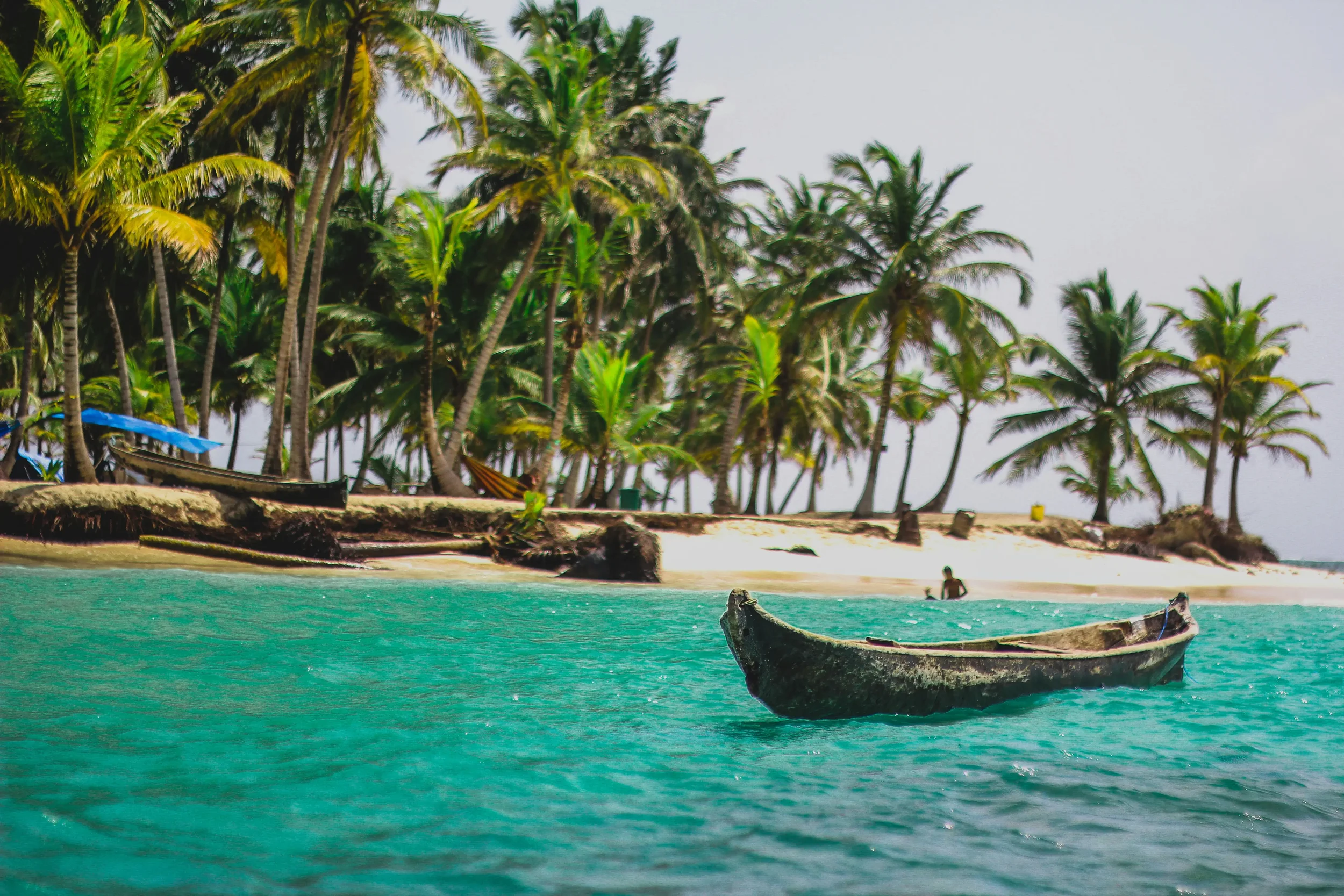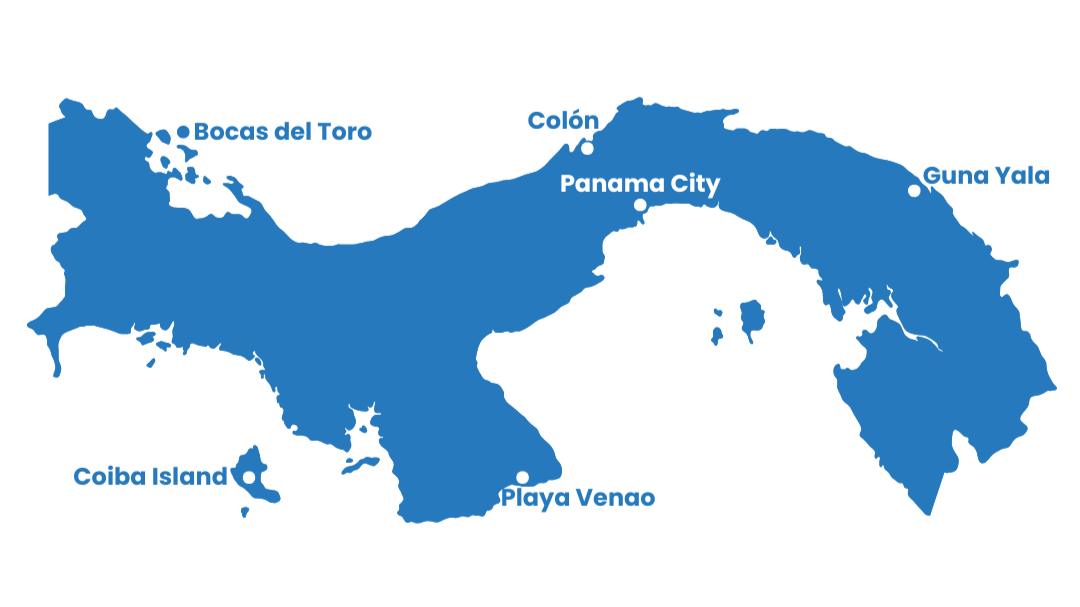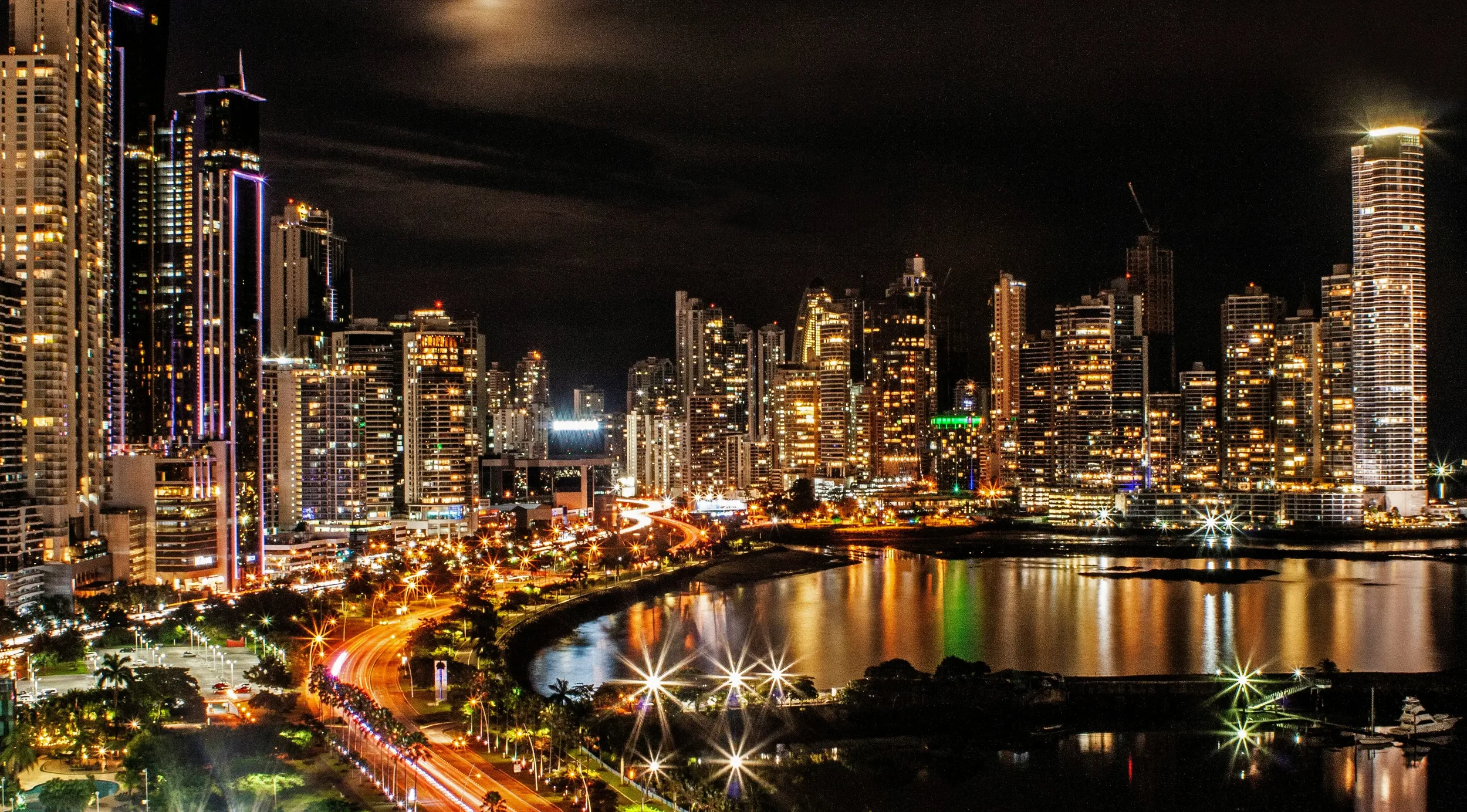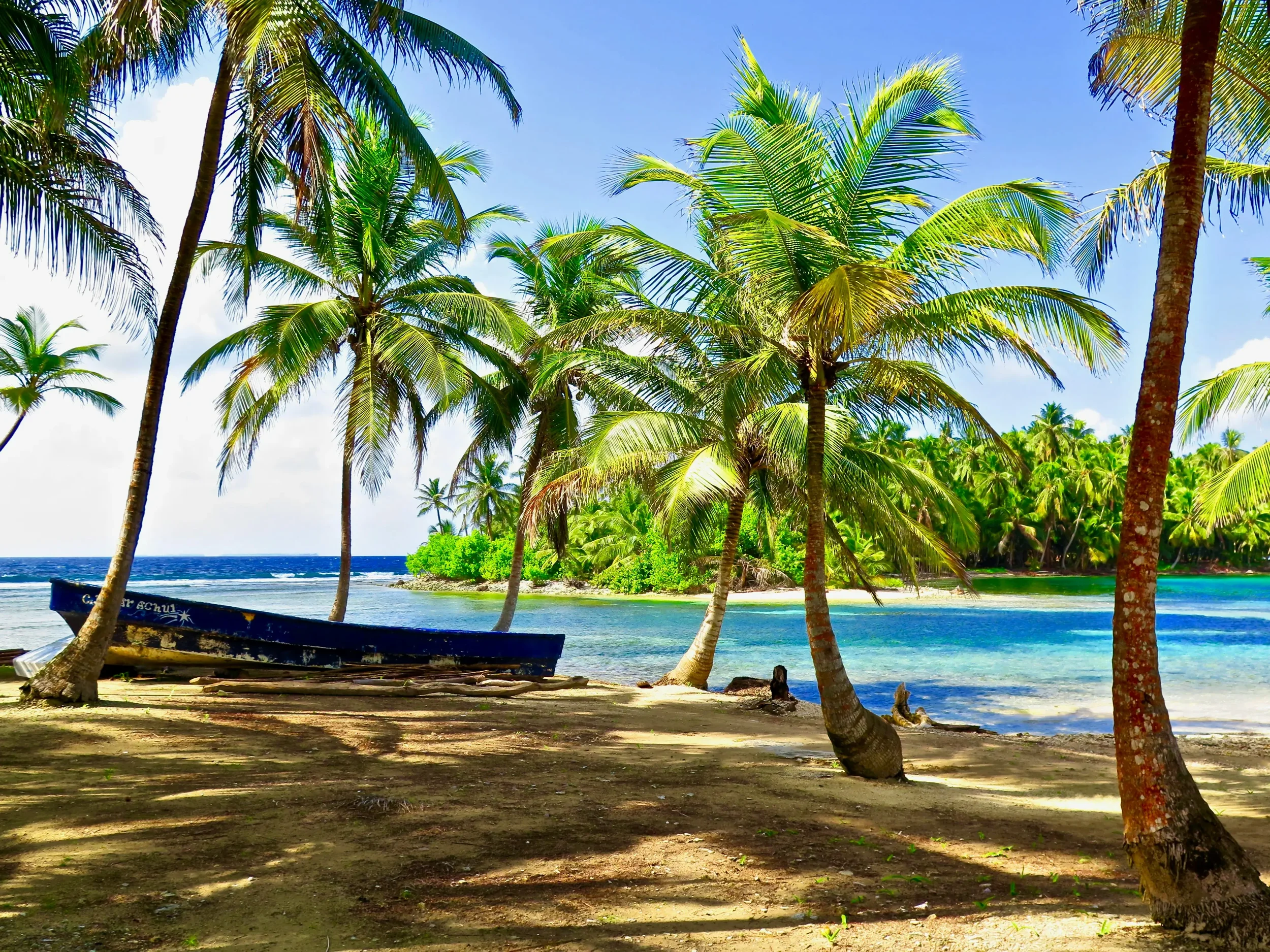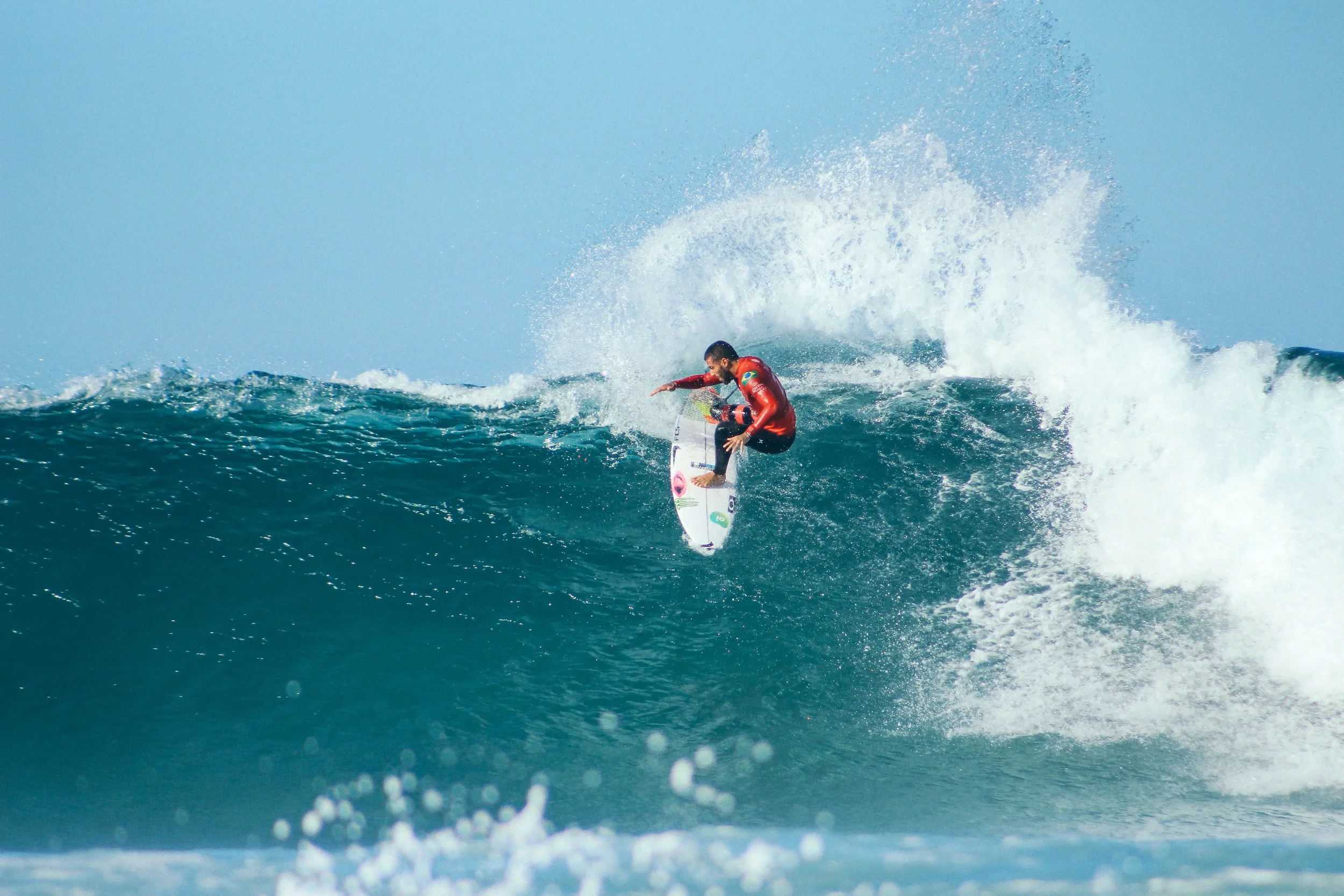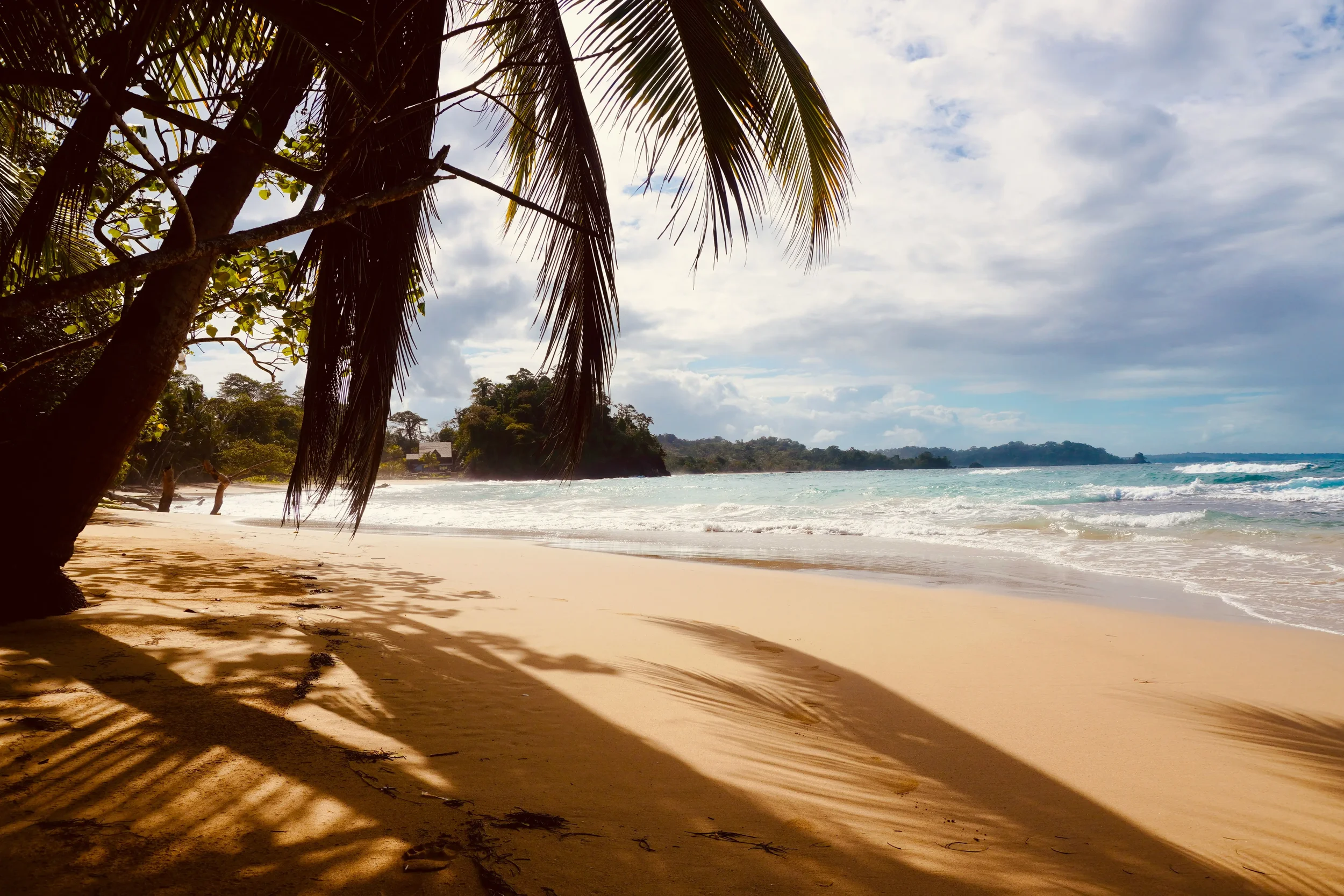PANAMA
-
Panama sits at the crossroads of two continents and two oceans, mixing modern cities with wild nature in a way that feels both surprising and inviting. It’s best known for the Panama Canal — an engineering marvel that links the Atlantic and Pacific — but there’s so much more here. From vibrant indigenous cultures to bustling Panama City with its historic Casco Viejo and sleek skyline, Panama offers a blend of urban life and natural beauty.
Travelers usually start in Panama City, a dynamic hub that offers both rich history and quick access to the Panama Canal. Beyond that, you can head to the Caribbean’s laid-back islands of Bocas del Toro for surfing and snorkeling, explore the mountain town of Boquete with its coffee farms and cloud forests, or visit the remote San Blas Islands, home to the Guna people. It’s a mix of city lights, tropical beaches and rich culture all rolled into one.
-
Panama has a tropical climate with distinct wet and dry seasons, but temperatures remain warm year-round. As it is a narrow land bridge, the weather can vary slightly between the Pacific and Caribbean sides.
Overall Best Time to Visit: The dry season (mid-December to April) is generally considered the best time for clear skies and minimal rain, making it ideal for most activities, including beach visits and city exploration. This is also peak tourist season.
Regional Breakdown:
Pacific Side (Panama City, Azuero Peninsula, Pearl Islands):
Dry Season (mid-December - April): Hot and sunny, with low humidity and very little rain. Temperatures usually range from 30°C-35°C (86°F-95°F).
Wet Season (May - mid-December): Hot and humid, with daily afternoon showers. Mornings are often sunny. The "wettest" months are typically October and November.
Caribbean Side (Bocas del Toro, San Blas Islands, Portobelo):
More Consistent Rain: The Caribbean side tends to receive more rainfall throughout the year compared to the Pacific.
"Drier" Periods: February-March, and September-October. These periods offer the best chance for sun.
Overall: Hot and humid year-round, with a high chance of rain, but often in short, intense bursts followed by sunshine.
Highlands (Boquete, El Valle de Antón):
Cooler and Milder: Due to higher elevation, these areas experience cooler temperatures than the lowlands (around 18°C-25°C / 64°F-77°F).
Dry Season (mid-December - April): Less rain, pleasant and sunny.
Wet Season (May - mid-December): More consistent rainfall, but mornings are often clear.
Important Tip: Even in the dry season, be prepared for occasional showers, especially on the Caribbean side or in the highlands. If traveling during the wet season, plan activities for the mornings.
-
UK, EU & US passport holders:
Citizens from the UK, EU, and US generally do not need a visa for tourist stays up to 180 days. Upon arrival, immigration officials will stamp your passport with the permitted length of stay.
Important Notes:
Passport Validity: Your passport must be valid for at least three months beyond your intended date of entry into Panama. Some sources recommend six months, so it's safer to have that.
Proof of Onward Travel: You are generally required to show proof of onward travel (e.g., a flight ticket leaving Panama). This is often checked by airlines before boarding and can be strictly enforced by immigration.
Proof of Funds: You must be able to demonstrate solvency of at least $500 USD (or equivalent) for your stay. While not always asked for, it's wise to have bank statements or credit cards available.
Extension: Extending your tourist stay beyond 180 days is generally not possible for tourists. If you wish to stay longer, you would need to apply for a different type of visa from outside Panama.
Overstay Fines: Overstaying your permitted time will result in fines upon departure and may impact your ability to re-enter Panama in the future.
-
Currency: US Dollar (USD) and Panamanian Balboa (PAB).
The Balboa is pegged at 1:1 with the USD, and US dollar bills are the common currency. Panamanian coins (Balboas) are used interchangeably with US coins.
Credit/debit cards are widely accepted in Panama City and major tourist areas. Cash is essential for smaller purchases, local eateries, public transport (outside of Panama City's metro), and in more remote areas like the San Blas Islands or Bocas del Toro.
Best way to access money:
US Dollars: Since the USD is the de facto currency, bringing USD cash can be very convenient.
Travel Cards: Using a fee-free travel card like Revolut, Wise or Monzo for card payments and ATM withdrawals is efficient as no currency conversion is needed from USD.
ATMs: Widely available in cities and towns. Look for ATMs from major banks like Banco General, Banistmo or Scotiabank. Fees apply per transaction, and withdrawal limits vary.
Avoid Airport Exchange: Not applicable since USD is used.
Typical daily backpacker budget: $40–$80 USD/day. Panama is generally more affordable than Costa Rica but more expensive than other Central American neighbors. This budget can cover budget hostel dorms, local eateries (fondas), public transport, and some free activities. Costs will be significantly higher if you plan on visiting the San Blas Islands, taking organized tours or staying in mid-range hotels.
Tips:
Fondas: Eat at fondas (small, local restaurants) for affordable and authentic Panamanian food. A comida corriente (daily special) is a good value meal.
Public Transport: Panama City has an efficient metro system (you'll need a Metro Card). Buses are extensive and cheap throughout the country. For long distances, comfortable intercity buses are available.
San Blas Islands: Be prepared for a basic, rustic experience in San Blas. Prices for accommodation, food and tours on the islands are generally fixed and paid in cash to the Guna (Kuna) indigenous community. This can be a significant budget item.
Negotiate (sometimes): Prices in stores and for organized tours are generally fixed. For taxis outside of ride-sharing apps, agree on a price beforehand. At local markets, some polite bargaining for souvenirs might be possible.
Carry Small Bills: Especially outside Panama City, smaller USD denominations ($1, $5, $10, $20) are much easier for vendors to accept.
Main Destinations

